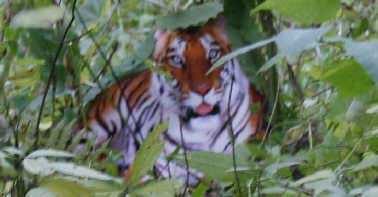Experts from the State Forestry Administration have sketched out a detailed plan and delimited a 200,000 square kilometer region to search for the nation's wild South China tigers in a bid to appease recently sparked rumors about the existence of the mammal.
China News Service reported that Cao Qingyao, a spokesman of the administration, said an initial group consisting of 10 specialists had concluded a general survey of local households and terrain around Zhenping county, once a major habitat of the precious tigers in northwest China's Shaanxi Province.
Experts have looked over previous evidence that the wild tigers still exist, said Cao, who unveiled the searches developments while taking part in an online interview with China Central Television. He adds that experts will also conduct studies of other animals living in the area during their search.
Researchers will be in the right place when observations commence after a possible first snow in the region in December and will have the support of infrared shooting equipment to help them, said Cao, adding that the radius is to be enlarged if necessary.
Earlier reports claimed experts had discovered some footprints similar to the tigers' in the area and that further study was well under way.
But the watchdog insists that the results of the search will not be revealed until the completion of cross-season research next year.
South China tigers, only living in China, have been listed an endangered species worldwide for many years and are believed by many to have completely disappeared in the wild.
People restored part of their confidence in the existence of the tiger in the wild after a farmer, Zhou Zhenglong, was reported to have shot dozens of photos of a wild South China tiger in the forest near his home in Zhenping County last October.
In his pictures, a big cat is resting in a lush forest with part of its face hidden.
The photos were widely published online and touted by the media as the first real evidence of the animals' existence in the wild for over 43 years. However, subsequent inconsistencies triggered heated dispute over the authenticity of the photos.
Some people believe the photos were counterfeited using technical means, which was later backed up by an alleged link between the photos and some original tiger paintings.
(CRI November 29, 2007)






